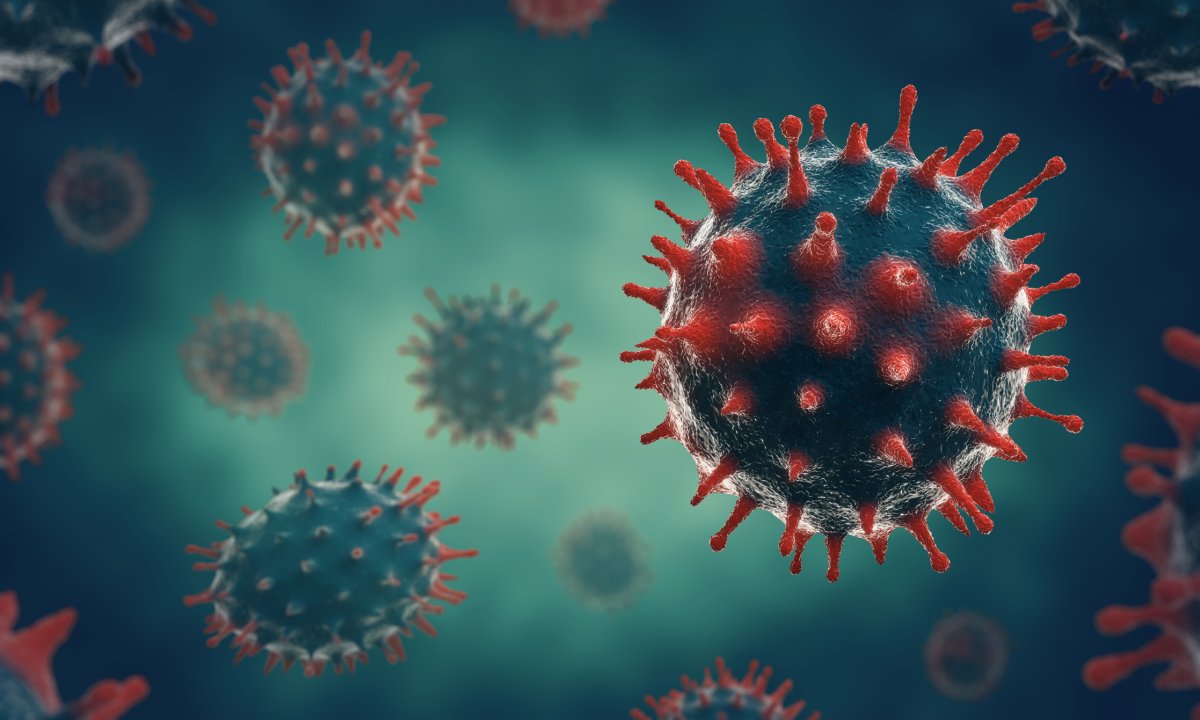Two new variants of the SARS-CoV-2 coronavirus have been found in Ohio, with one dubbed the "Columbus strain" as scientists believe it became the dominant form in the city late last year.
The Columbus strain, named COH.20G/501Y, has three mutations not seen before, according to scientists at The Ohio State University (OSU) Wexner Medical Center and College of Medicine. It appears to have become the most widespread form of COVID in the city in the three weeks between late December 2020 and January 2021, according to a news release.
A variant is a form of a virus, and is sometimes used interchangeably with the term strain, while a mutation is a change to the virus's genes that it gathers as it replicates. Mutations are a natural part of the life cycle of a virus, with most not changing how it behaves. Collections of mutations make up variants.
Dr. Dan Jones, vice chair of the division of molecular pathology at OSU who led the study, said in a statement: "This new Columbus strain has the same genetic backbone as earlier cases we've studied, but these three mutations represent a significant evolution. We know this shift didn't come from the U.K. or South African branches of the virus."
The other variant has the same mutation as a separate, more infectious variant from the U.K. that has entered at least 50 countries, including the U.S. On Tuesday, Maryland and Wisconsin became the latest states to report the U.K. variant had been identified.
The team believes the mutation occurred in a patient from Ohio, and it is not known how widespread it is in the population.
The changes in both variants affect the spike protein that the COVID virus uses to invade the body. It is believed the Columbus strain has experienced changes that make it more infectious, similarly to variants that have emerged in the U.K. and South Africa, although more research is needed to confirm this.
According to CNBC, Jones told a press briefing on Wednesday it is too early to know if the Columbus strain is more infectious than past forms, but it likely is judging by the speed with which it has spread over the past few weeks.
The team made the findings after monitoring any changes to the genetic make-up of COVID viruses taken from patients since March 2020. The information was released in an OSU Wexner Medical Center press statement and the data is due to be submitted to the pre-print server BioRxiv, meaning they have not yet been through the rigorous peer review process.
Study co-author Peter Mohler, chief scientific officer at the Ohio State Wexner Medical Center and vice dean for research at the College of Medicine, said in a statement: "At this point, we have no data to believe that these mutations will have any impact on the effectiveness of vaccines now in use."
Mohler said: "It's important that we don't overreact to this new variant until we obtain additional data.
"We need to understand the impact of mutations on transmission of the virus, the prevalence of the strain in the population and whether it has a more significant impact on human health. Further, it is critical that we continue to monitor the evolution of the virus so we can understand the impact of the mutant forms on the design of both diagnostics and therapeutics. It is critical that we make decisions based on the best science."
Ian Jones, professor of virology at the U.K.'s University of Reading who did not work on the study, told Newsweek: "The Ohio variant is the latest to be reported with variation in the spike protein that may affect the virus's ability to enter the cell. This would be consistent with enhanced transmission as the virus is better at the early steps of infection.
"To date, all variants like this that have been tested have remained susceptible to vaccine induced immunity and although it requires confirmation that is probably also the case here. Infection still requires close contact, so social distancing measures remain more important than ever."
U.S. Centers for Disease Control and Prevention spokesperson Jason McDonald told CNBC the agency is looking at the findings.
Dr. Bruce Vanderhoff, chief medical officer of the Ohio Department of Health, told CNBC he was "not surprised" by the emergence of a new variant in the state, but said such an occurrence "is always concerning because more contagious strains could lead to more people getting sick, more people getting hospitalized, and ultimately more people dying."
He said: "No matter what strain of COVID-19, people can continue to protect themselves by wearing masks consistently, staying at least 6 feet apart, avoiding crowds, ventilating indoor spaces, and frequent hand washing."

Uncommon Knowledge
Newsweek is committed to challenging conventional wisdom and finding connections in the search for common ground.
Newsweek is committed to challenging conventional wisdom and finding connections in the search for common ground.
About the writer
Kashmira Gander is Deputy Science Editor at Newsweek. Her interests include health, gender, LGBTQIA+ issues, human rights, subcultures, music, and lifestyle. Her ... Read more
To read how Newsweek uses AI as a newsroom tool, Click here.








